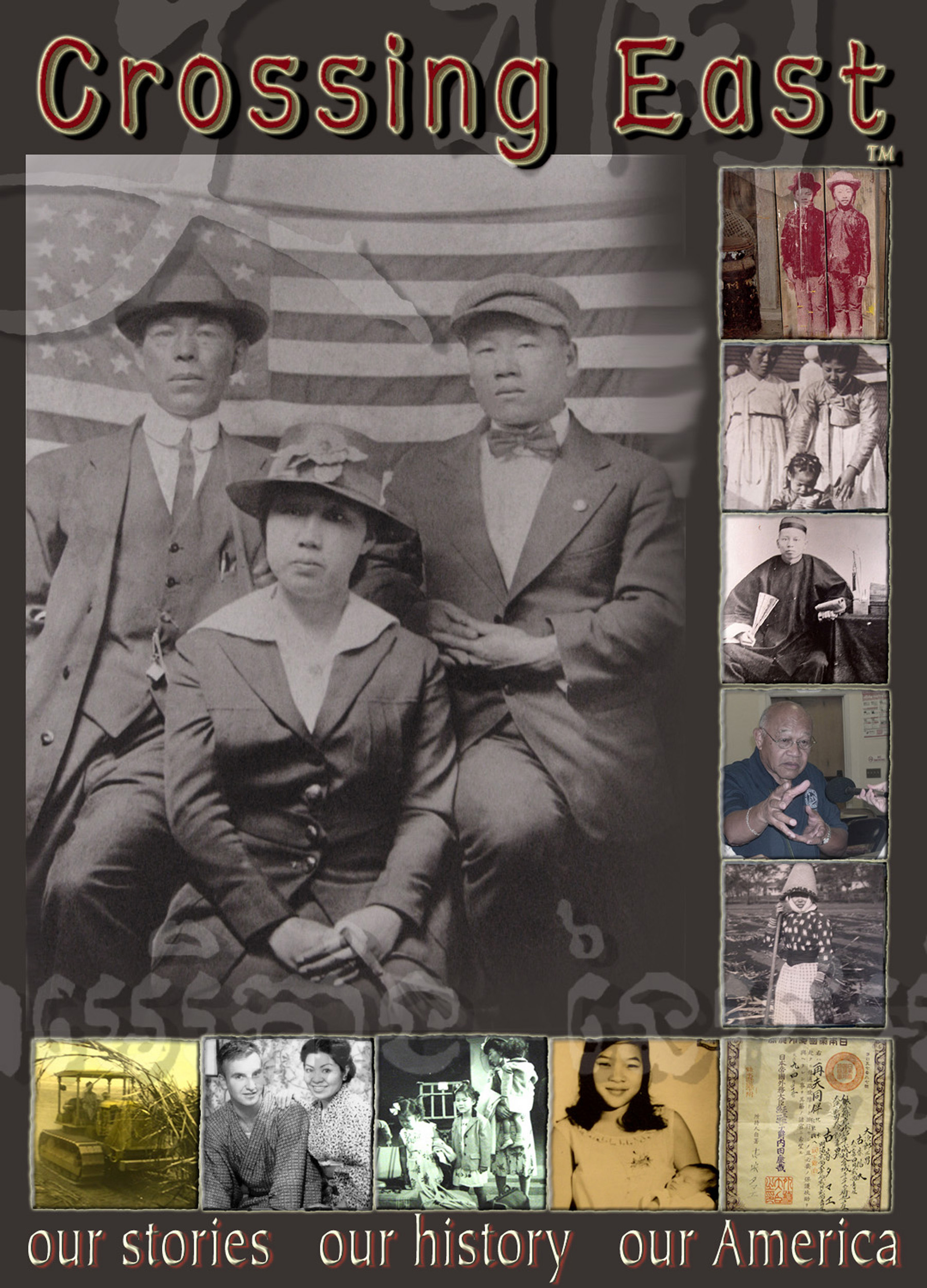PEARL HARBOR TAPE: On December 7, 1941, Japan, like its infamous Axis partners, struck first…. [fade down]
Robynn Takayama: Japan’s attack on Pearl Harbor brought the United States into World War II. The bombing also launched an internal attack on Americans of Japanese descent, especially on the west coast.
Yuri Kochiyama: Three tall white men came knocking on our door. …and they all showed a little card and it said “Federal Bureau of Investigation.
Robynn Takayama: Yuri Kochiyama returned home to her father in San Pedro, California. He was recovering from surgery just the day before the attack on Pearl Harbor.
Yuri Kochiyama: And then they asked if a Seichi Nakahara lived there. And I said, “Oh, yes. That’s my father.” And they said, “where is he?” I said he’s sick. He’s in the back sleeping.” They just went right in the house. Woke him up and told him, “Put on your slippers and bathrobe.” And everything happened so fast. I didn’t have a chance to even ask where are you taking him.
Robynn Takayama: This story foreshadows what happened to many families right after September 11th. Hundreds of men from South Asian or Middle Eastern countries were swept up and detained.
Interpreter: My name is Bobby Khan and I’m interpreting for Malik Ali.
Malik: Punjabi starts during interpreter introduction
Malik Ali: I was hearing from the people who was regularly going to the mosque that FBI and INS is cracking down where predominately Pakistani and Muslim community is living.
Malik: Punjabi posts and ends
Robynn Takayama: Deepa Iyer
Deepa Iyer: Their men, their fathers, their brothers, were taken away to detention centers, were interrogated, were investigated and were denied access to their own family members, were denied access to counsel, were part of the disappeared in America.
SOUND: FLUTE FADES UP
Robynn Takayama: In the first 48 hours after the attack on Pearl Harbor, more than 700 Japanese Americans were rounded up. Yuri Kochiyama’s family discovered their father, still recovering from surgery, was taken to a federal prison on Terminal Island. He was interrogated for hours at a time as a prisoner of war. Six weeks later, her father returned home in an ambulance and passed away the next day.
The family had little time to grieve because on February 19, 1942, President Franklin Roosevelt signed Executive Order 9066. All Japanese Americans living on the West Coast were ordered to in-land internment camps.
Robynn Takayama: Yuri Kochiyama
Yuri Kochiyama: It was only what you could carry. We just could not carry anything that could be used as a weapon. I mean, no knifes. I don’t think they let us bring chopsticks. No radio.
Robynn Takayama: More than a hundred and ten thousand Japanese Americans were moved to ten internment camps throughout the United States. Once released at the end of the war, the Isseis, Japanese immigrants, had to rebuild their lives from scratch.
Yuri Kochiyama: Isseis lost their homes. They lost their work, their income, everything, I mean self determination, civil rights…They lost really everything.
SOUND: MUSIC FADES OUT
SOUND: CROWD FADES IN
John Oda: When the Japanese were interned, the only group that stood up in protest to their internment were the Quakers…
Robynn Takayama: John Oda is the reverend at Pine United Methodist Church, an historically Japanese American church in San Francisco.
John Oda: …it’s sad that no one else stood in opposition to this illegal internment. And so that’s one of the reasons we were very quick and very strong to stand up and be here.
Robynn Takayama: Right after 911, vandals destroyed large glass doors to the Islamic Center of San Francisco. Pine United raised funds to help replace these doors and became a sister church to the mosque.
SOUND: AMBIENCE FADES UP
Robynn Takayama: Many Japanese Americans quickly spoke out against a repeat of mass round ups and incarceration after 9/11, but the government DID implement another form of racial profiling. The Department of Justice instituted the Special Registration Program in September 2002. Malik Ali first heard about it at his mosque.
